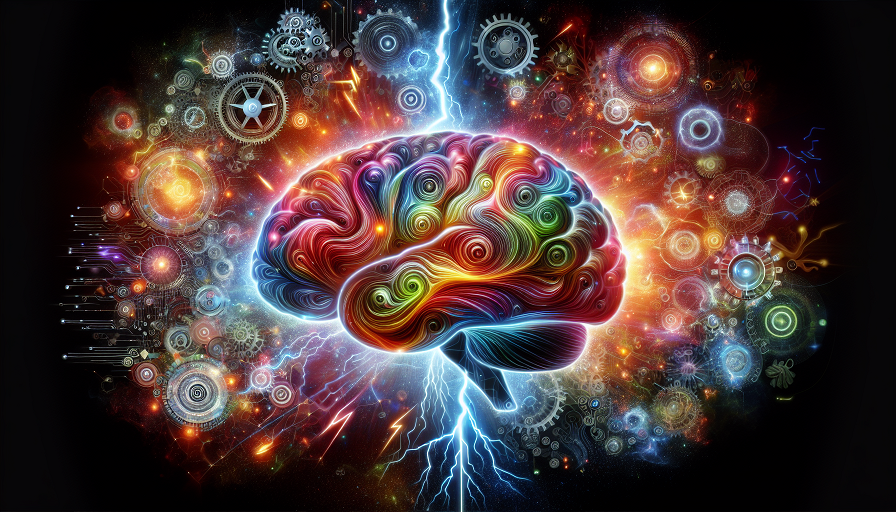
Creativity is often thought of as a mysterious, innate gift possessed by a lucky few. Yet modern neuroscience suggests that creativity is not just a talent but a skill that can be cultivated and enhanced. At the heart of this process lies neuroplasticity — the brain’s ability to adapt, rewire, and forge new connections in response to experiences. By understanding how neuroplasticity influences creativity, we can unlock new pathways for innovation, problem-solving, and self-expression. Here we look at the fascinating relationship between neuroplasticity and creativity, examining how brain adaptability fosters creative thinking and offering practical tips to boost your own creativity.
Contents
What Is Neuroplasticity?
Neuroplasticity is the brain’s remarkable capacity to reorganize itself by forming and strengthening neural pathways. It enables learning, memory formation, and the development of new skills by adapting to experiences and environments. Neuroplasticity operates on two primary levels:
- Functional Plasticity: The brain’s ability to shift functions from one region to another, often compensating for damage or optimizing efficiency.
- Structural Plasticity: Physical changes in the brain, such as the growth of new neurons (neurogenesis) or the strengthening of synaptic connections.
Creativity thrives on the brain’s ability to connect seemingly unrelated ideas, explore novel perspectives, and solve problems in innovative ways. Neuroplasticity provides the foundation for these processes, making it a key driver of creative potential.
What Is Creativity?
Creativity is the ability to generate original ideas, solutions, or expressions that are both novel and useful. It encompasses a wide range of activities, from artistic endeavors like painting and music to scientific innovation and problem-solving in everyday life.
Neuroscientists have identified specific brain networks involved in creativity:
- The Default Mode Network (DMN): Associated with introspection, imagination, and idea generation.
- The Executive Control Network (ECN): Responsible for focus, evaluation, and decision-making.
- The Salience Network: Facilitates the switching between the DMN and ECN, balancing spontaneous creativity with critical assessment.
Creativity occurs when these networks work in harmony, a process made possible by the brain’s neuroplastic nature.
How Neuroplasticity Enhances Creativity
Neuroplasticity enhances creativity by reshaping the brain’s neural networks, fostering flexibility, and enabling new patterns of thought. Here’s how it works:
Forming New Connections
Creativity often involves connecting unrelated ideas in novel ways. Neuroplasticity enables the brain to forge these connections by strengthening synapses and creating new neural pathways. This allows individuals to think outside the box and explore unconventional solutions.
Breaking Old Patterns
Rigid thinking and habitual behaviors can stifle creativity. Neuroplasticity helps break these patterns by pruning unused neural connections and encouraging the brain to adapt to new stimuli. This process makes it easier to approach problems with fresh perspectives.
Enhancing Divergent Thinking
Divergent thinking — the ability to generate multiple solutions to a single problem — is a hallmark of creativity. Neuroplasticity supports divergent thinking by promoting flexibility in the prefrontal cortex, the brain region involved in abstract thought and imagination.
Strengthening Emotional Resilience
Creativity often requires risk-taking, vulnerability, and resilience in the face of failure. Neuroplasticity helps strengthen the neural circuits involved in emotional regulation, enabling individuals to take creative risks and persist through challenges.
Promoting Neurogenesis
The growth of new neurons, particularly in the hippocampus, enhances memory and the ability to integrate diverse ideas. This neuroplastic process fuels creativity by expanding the brain’s capacity for novel thinking.
Real-Life Examples of Creativity Through Neuroplasticity
Neuroplasticity has been a driving force behind some of the most extraordinary examples of human creativity. Here are a few inspiring cases:
The Adaptability of Pablo Picasso
Pablo Picasso’s artistic evolution, from classical realism to cubism, demonstrates the power of neuroplasticity. His ability to experiment with new styles and break artistic conventions reflects a highly adaptable brain capable of forming novel connections and embracing change.
Albert Einstein’s Imaginative Problem-Solving
Studies of Albert Einstein’s brain revealed a unique density of neural connections in regions associated with spatial reasoning and creativity. His groundbreaking theories, like relativity, relied on his ability to visualize abstract concepts — a testament to the role of neuroplasticity in scientific innovation.
Rehabilitation Through Creative Expression
Individuals recovering from brain injuries often leverage neuroplasticity through creative therapies like music, art, and writing. These activities stimulate new neural pathways, aiding in recovery while fostering self-expression and emotional healing.
How to Boost Creativity Through Neuroplasticity
Neuroplasticity can be nurtured through intentional practices that promote brain adaptability and stimulate creative thinking. Here’s how to get started:
Embrace Novel Experiences
Trying new activities, exploring unfamiliar environments, or learning new skills stimulates the brain and encourages the formation of new neural connections. Travel, cooking a new recipe, or picking up a musical instrument are great ways to boost creativity.
Practice Mindfulness
Mindfulness meditation enhances connectivity in brain regions associated with creativity, such as the default mode network. Regular practice fosters mental clarity and increases the brain’s capacity for innovative thinking.
Engage in Physical Exercise
Exercise promotes neurogenesis and increases levels of brain-derived neurotrophic factor (BDNF), a protein that supports neural growth. Activities like yoga or running can enhance both mental and physical flexibility, fueling creative insights.
Challenge Your Brain
Solve puzzles, play strategy games, or learn a new language to stimulate brain plasticity. These activities encourage divergent thinking and problem-solving, core components of creativity.
Foster a Growth Mindset
Believe in your ability to improve and adapt. A growth mindset reinforces neuroplasticity by encouraging persistence and exploration in the face of challenges.
Overcoming Blocks to Creativity
Creativity can be stifled by stress, fear of failure, or rigid thinking. Neuroplasticity offers tools to overcome these barriers:
- Addressing Stress: Stress reduces neuroplasticity, but practices like deep breathing, exercise, and mindfulness can mitigate its effects.
- Confronting Fear: Repeated exposure to challenges builds emotional resilience, helping the brain adapt to creative risks.
- Breaking Routine: Shaking up daily habits encourages the brain to form new pathways and think outside the box.
Unlocking Creativity Through Neuroplasticity
Creativity is not a fixed trait but a dynamic skill that can be cultivated through the power of neuroplasticity. By reshaping neural pathways, fostering flexibility, and embracing new experiences, the brain becomes a fertile ground for innovation and expression. Whether you’re an artist, scientist, or someone seeking everyday inspiration, the principles of neuroplasticity can help you unlock your creative potential.
Remember, creativity isn’t limited to a select few — it’s a universal capacity that resides within all of us. With intentional practice and a willingness to explore, you can nurture your brain’s adaptability and embark on a lifelong journey of creative discovery.

